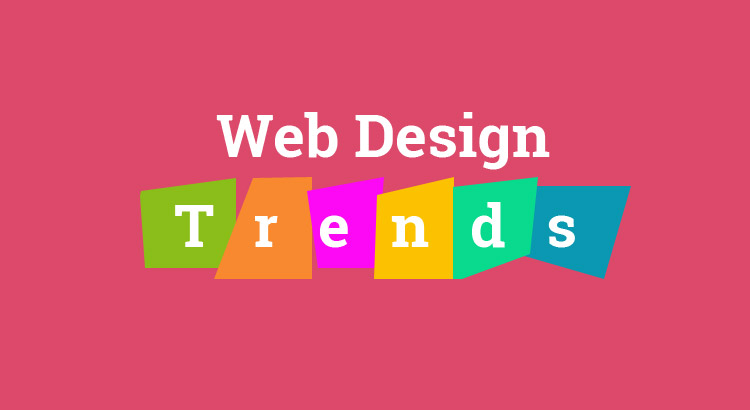The world of website designing continues to evolve, and this year promises a host of exciting trends. With more businesses focusing on user-centric designs, the importance of modern website aesthetics and functionality cannot be overstated. These web design trends of 2025 will not only transform the way websites look but also improve the user experience, making it more engaging and accessible. Let’s dive into the trends that will shape the future of online spaces.
Modern Website Design Trends
Websites are moving beyond traditional designs, incorporating innovative elements that are both functional and visually appealing. These trends are expected to take center stage, as businesses seek to offer richer, more immersive digital experiences for their users. Below are some of the major trends to watch out for:
1. Custom Illustrations
Gone are the days of relying on generic stock images. Custom illustrations are becoming a core element of modern web designs, bringing unique personality to websites. These tailored visuals draw inspiration from traditional art forms, such as print publishing, and are evolving with the help of advanced coding capabilities.
Websites will feature illustrations that go beyond flat 2D designs, embracing 3D effects and dynamic features. For example, designers will incorporate gradient shading that shifts color over time or digital cut-out styles replicating paper designs.
Additionally, interactive elements like 3D cursor movements will encourage users to engage more with the site. Custom illustrations allow brands to reinforce their identity while making their online presence more distinctive and memorable.
2. Full-Page Headers
Full-page headers are set to dominate, offering a bold and visually striking design choice. These headers typically feature compelling images alongside key text or CTAs (Call-To-Action) placed strategically. The text often appears on the left side of the header, as research shows that users tend to focus on this area first.
These headers are perfect for creating an immediate impact, introducing the main theme or offering of the site while guiding the visitor’s next steps. For instance, a clean layout with a high-quality image on the right side and a strong CTA on the left can make navigation intuitive and direct.
3. Parallax Scrolling
Parallax scrolling continues to gain traction as a key web designing trend. This technique involves creating a dynamic scrolling experience, where the background moves at a slower speed than the foreground, providing a sense of depth. When users scroll, the content unfolds like a story, drawing them deeper into the website.
Beyond static images, modern parallax scrolling integrates animations or background videos that play only when users interact with the page. This technique can be used to reveal additional information, making it feel as though the website is “coming to life” as the user engages with it.
This dynamic approach is excellent for storytelling, offering a more immersive and visually stimulating experience for visitors.
4. Purposeful White Space
Minimalism is making a strong comeback, and one of its cornerstones is the use of white space. Websites will feature an increased focus on intentional empty spaces between elements, allowing content to breathe and creating a cleaner aesthetic. White space helps separate content blocks, providing a clear structure and improving the overall flow of the site.
The proper use of white space not only boosts readability but also creates a natural visual hierarchy. It guides the user’s eyes from one section to another, ensuring that important elements such as CTAs or product features are easily noticeable. This emphasis on clarity helps reduce visual clutter, resulting in a more enjoyable and intuitive user experience.
5. Playful Cursors
Cursors have traditionally been static and functional, but websites will start using them as a playful, interactive design element. Customizing the cursor can transform user interactions, making the experience more fun and engaging. For example, a website might alter the cursor shape when hovering over different sections or trigger animations when the user moves their cursor over specific areas of the page.
This trend not only provides a unique touch but also enhances engagement. Users will spend more time exploring the site, enjoying the novelty of these dynamic cursors. The playful nature of these cursors adds an element of surprise and delight, improving the overall interaction with the site.
6. Focus on UX/UI Enhancements
The user experience (UX) and user interface (UI) will continue to be at the forefront of web designing. Websites will become more intuitive, with features that are easy to navigate and content that is easily digestible. Fast page load speeds, mobile responsiveness, and minimal clutter will become essential aspects of successful websites.
UX designers will prioritize simplicity, ensuring that the user’s journey is smooth and uninterrupted. UI design will complement this by incorporating features like voice-enabled interfaces, interactive images, video transcriptions, and balanced motion design. This means that your website will not only look great but also function seamlessly across different devices, especially as mobile traffic continues to rise.
7. Grid-Based Layouts
Grid layouts are not new to web design, but designers will push these structures to new creative heights. One of the major developments in this area is the growing use of CSS Grid Layout, a tool that enables developers to create sophisticated 2D layouts for websites.
This system allows for greater flexibility, making it easier to arrange content while maintaining a visually balanced design. Asymmetrical grids, where elements are placed in a non-uniform fashion, will be particularly popular.
This approach offers a more creative and dynamic aesthetic while maintaining organization and clarity. Websites will use grids to balance text, images, and other content elements in a way that is both functional and visually appealing.
8. Image Headers
The trend of full-image headers will continue to rise. Websites will use large, impactful images to grab attention immediately. These headers serve as the first visual impression of the site and can effectively communicate the brand’s message or mood.
Image headers help set the tone for the entire website, often paired with CTAs that guide users to take the next step. The strong visual contrast in these headers creates a striking impression, making them an ideal choice for brands looking to make a bold statement.
Whether it’s a breathtaking landscape or an artistic design, image headers are a powerful tool for engaging users right from the start.
9. Impactful, Engaging Stories
Storytelling will be an integral part of modern websites. Brands will increasingly use their websites to share compelling narratives that connect with users emotionally. This trend is about creating a deeper connection with the audience, helping them see not just what the brand offers, but why it matters.
Storytelling elements, such as compelling visuals, videos, and text, will be integrated into the website’s design to create a cohesive, immersive experience. Websites will use dynamic features like parallax scrolling or interactive videos to tell these stories, making the entire user experience feel like a journey.
Engaging content combined with a strong narrative will help brands foster trust and loyalty with their audience.
10. Color Trends
Color plays a critical role in website designing, influencing user emotions and interactions. Color trends are shifting toward more muted tones. The color of the year is A.I. Aqua, a soft tech-inspired blue that embodies a futuristic aesthetic.
In addition to the color palette, designers will continue to experiment with gradients, creating smooth transitions between colors to evoke a sense of depth and dimension.
The psychology of color will also play an important role, with designers using warm colors like red or orange to draw attention to CTAs, while cooler shades like blue or green will be used for backgrounds or informational elements. By understanding the impact of color, designers can ensure that the website’s aesthetic aligns with the brand’s values and message.
Summary
As we move forward, web design trends will focus on creating more personalized, engaging, and interactive user experiences. By embracing these trends, businesses can enhance their online presence and remain competitive in an increasingly digital world.


